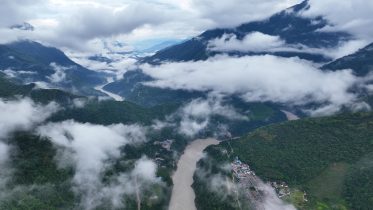
High Mountain Asia
High-Mountain Asia is a high-elevation geographic region in Asia that includes numerous cordillera and highland systems around the Tibetan Plateau, encompassing regions of East, Southeast, Central and South Asia. The region was orogenically formed by the continental collision of the Indian Plate into the Eurasian Plate. According to NASA, the region is the "world's largest reservoir of perennial glaciers and snow outside of the Earth's polar ice sheets", and has been nicknamed the "Third Pole". Their meltwaters and runoffs form the headwaters of river systems that support the drinking water and food production of nearly 3 billion people, and hydrological and climate changes in the mountains affect "ecosystem services, agriculture, energy and livelihood" for all the surrounding areas. NASA has a High Mountain Asia Team to study the region.
